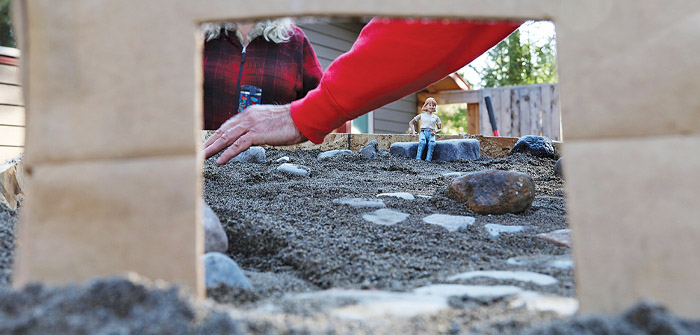(Photos by Autumn Swisher)
In the West, our culture tends to value European art forms like painting and music. Japan has these forms, however only they have Japanese Gardens. For them, Stone-setting, “the bones of a garden,” is an art form using boulders and stepping stones. If you’ve ever traveled to Japan, or maybe you’ve visited Japanese-style gardens here in the U.S like the Portland Japanese Gardens, you get it. These gardens are truly a treasure.
Locals wanting a deeper experience and understanding had their chance at the recent Sukiya workshops at Bend Pine Nursery. On Saturday, October 8, participants worked in oversized trays. Miniature sculpted environments build with rock and sand and using scaled-down, easy-to-manipulate materials made the process simple. Participants tried several iterations with different shapes and settings and learned to appreciate the principles pretty quickly.
The Sunday pruning workshop was a great hands-on way to work with living trees, shaping them for interest and beauty. Some of the participants had attended the year before and were able to see the changes in growth from the previous session. Attendees came from as far as Texas.
The Saturday evening lecture presentation went through many of the top 50 Japanese gardens in Japan. Some were in restaurants like the Koi café in Kyoto (my favorite), and a few at traditional Japanese ryokans (inns). The number one garden for the last 18 years has been the Adachi Museum. Some are at homes, open to the public. Many tourist destinations like the Golden Pavilion and Ryoan-ji were not in the top 50, but Kyoto’s Katsura Imperial Villa does rank high.
Takeaway from the presentation — Japanese garden treasures aren’t usually found at tourist hot spots, but there are a huge number of great gardens all around Japan to visit.

